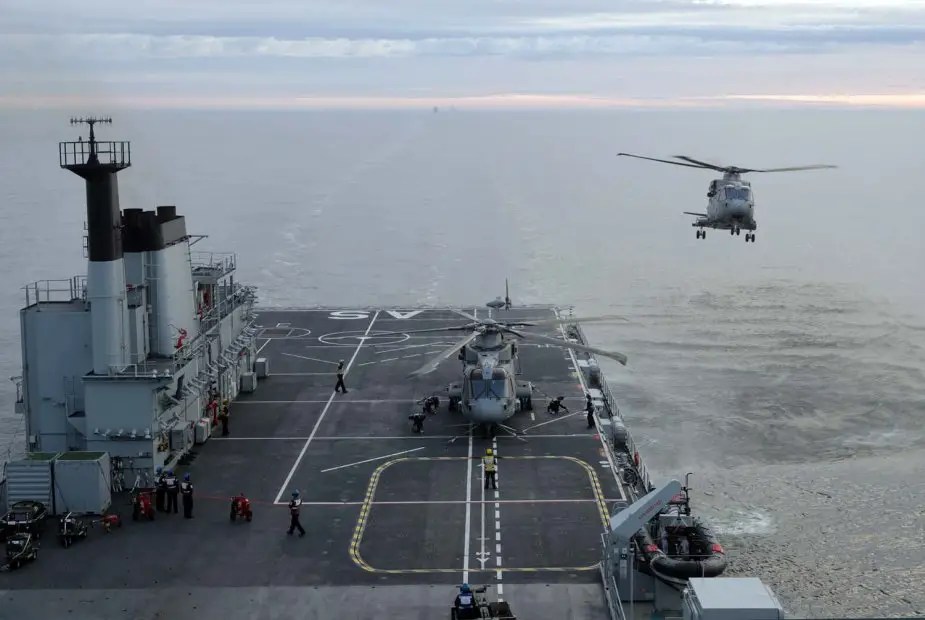Breaking news
RFA Argus of the Royal Navy demonstrates helicopter carrying capability.
The RFA Argus is at the heart of the amphibious task force deployed to the Baltic Sea for two months. The Royal Navy said the deployment will be led by flagship HMS Albion, "which has a substantial flight deck, but no hangar".
 A helicopter landing from the deck of the RFA Argus (Picture Source: Royal Navy)
A helicopter landing from the deck of the RFA Argus (Picture Source: Royal Navy)
“The Commando Helicopter Force and its Merlin Mk4 troop carriers (845 Naval Air Squadron) and recce/intelligence gathering Wildcats (847 NAS) – are embarked in Argus for the duration of Baltic Protector 2019."
"The deployment is the first test of the RN-led international Joint Expeditionary Force, which has a British amphibious task group at its heart, sucking in ships, aircraft, helicopter, troops and armour from up to eight other allied nations all with shorelines on either the Baltic or North Seas.”
The ship was requisitioned in 1982 for service in the Falklands War and purchased outright in 1984 for use as an Aviation Training Ship, replacing RFA Engadine. In 1991, during the Gulf War, she was fitted with an extensive and fully functional hospital to assume the additional role of Primary Casualty Receiving Ship. In 2009, the PCRS role became the ship’s primary function.
Argus deployed to the Persian Gulf in 1991 for service in the Gulf War and also saw service in the Adriatic in 1993 and 1999 supporting British operations in Bosnia and over Kosovo respectively. During this period, Argus operated in part as a makeshift helicopter carrier. Her unsuitability for this role was a major factor in the commissioning of HMS Ocean.
The Royal Navy also stated: “Although Argus has conducted exercises and providing training support both for the Fleet Air Arm and military medics – she doubles up as a casualty treatment ship thanks to an impressive suite of hospital facilities – she hasn’t been dispatched on an operation since helping to rid Sierra Leone of the deadly Ebola virus over the winter of 2014-15.”





























